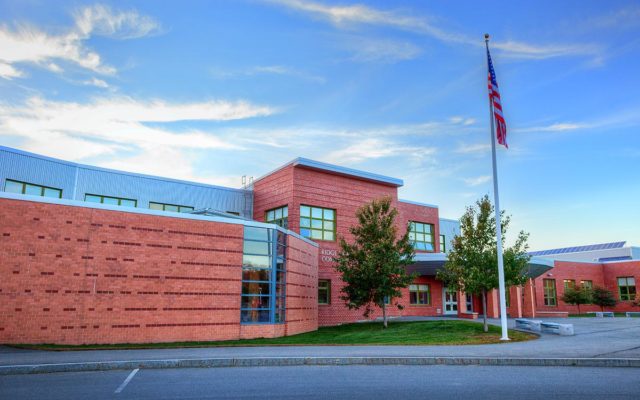
$14.57M SAD 46 budget set for Tuesday’s referendum
DEXTER — A proposed $14,575,628 SAD 46 budget for the 2018-19 academic year was approved at the annual district meeting on June 7 at the Ridge View Community School. The spending package will now go to a referendum in the towns of Dexter, Exeter, Garland and Ripley on Tuesday, June 12 with residents of the four communities voting either “yes” or “no” to make a district-wide decision.
Poll hours are scheduled from 8 a.m. to 8 p.m. at the Dexter Town Hall, 8 a.m. to 8 p.m. at the Exeter Town Office, 8 a.m. to 8 p.m. at the Garland Town Office and 10 a.m. to 8 p.m. at the Coursier Memorial School in Ripley.
“Tonight is the first of a two-part process,” Superintendent Kevin Jordan said. “The question that will be asked on Tuesday is simple, do you approve the business that was taken care of at the district budget meeting?”
Jordan said the $14,575,628 figure represents a $518,623 (3.68 percent) increase from the current school year spending plan. “The state is funding vocational education, the Tri-County Technical Center (TCTC), in a completely different way,” he said.
Instead of these monies being distributed to other area districts to be used to send students to TCTC in Dexter, the funds are instead going directly to SAD 46. “When you take that out the net increase is 1.45 percent from last year,” Jordan said, as the 1.45 percent is equal to about $204,000.
“The board is asking for no local additional money, I think that is really important for the taxpayers to know,” Jordan said. In order to receive $10,876,750 in state subsidy, the four SAD 46 communities need to raise the required $3,097,640, as well as just under $43,390 for debt service and a little more than $63,660 for adult education, but no local additional monies.
The approximate $14.57 million figure was approved across 17 warrant articles with minimal discussion over 12 minutes by those in attendance. Dexter, Exeter, Garland and Ripley will be responsible for a combined $3,204,693, an approximate $142,743 (4.662 percent) increase from the current academic year.
Each of the four SAD 46 towns would see an increase in its assessment. For Dexter the assessment of $1,926,982 is $79,322 (4.293 percent) more than for 2017-18. Exeter’s $546,400 assessment is up by $36,049 or 7.064 percent. An assessment of $447,054 for Garland is $15,897 more (3.687 percent). Ripley would see a $284,256 assessment, an increase of $11,475 or 4.207 percent.
Before residents began voting on the warrant articles, Jordan was asked about the status of the application made to the Maine Department of Education for the Integrated Consolidated (grade) 9-16 Educational Facility Pilot Project.
The application made by SAD 46, SAD 4 of the Guilford area and the Milo-based SAD 41 — also involving the Greenville Schools, SAD 12 of Jackman and TCTC — ranked third on a list of three finalists with a score of 145 points. The application trailed the 150 points for the proposed project in the Houlton area and surrounding school districts in southern Aroostook County and the score of 160 points for a possible facility in the Fort Kent and Madawaska areas in northern Aroostook County.
“We appealed some of our scores,” Jordan said. “Interestingly enough we got a letter from the Department of Education several weeks ago and they could not answer my scoring questions. The letter said parts of the application will be scrapped and will be rescored. So they are in a rescoring process and there is nothing final right now.
Under the Integrated, Consolidated 9-16 Educational Facility Pilot Project a regional comprehensive high school or possibly two or even three schools would be funded by the state with approximately $200 million set aside for the program. The facility is intended to serve as a model for the rest of Maine by encouraging neighboring school districts with declining enrollments to work together to combine resources and reduce costs.
“We have got our fingers crossed they will fund the three districts,” Jordan said.
The school would offer a variety of academic programs from high school to college — through the University of Maine and Maine Community College systems — and training and certifications in various industries via a number of business partnerships. Similar education models are used in other states.